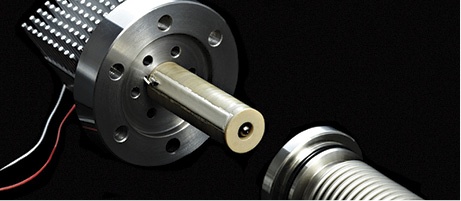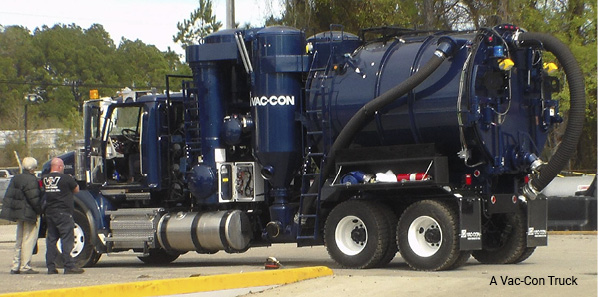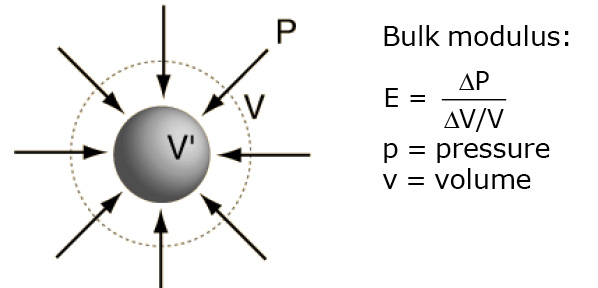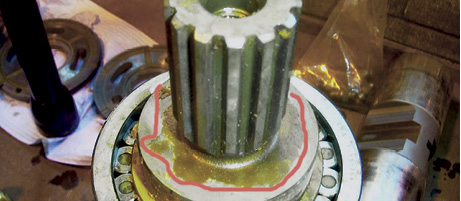Vacuum Pick-Up Cylinders
By Daniel Pascoe, Davasol, Inc.
 In a vacuum pick-and-place application, the most familiar method of moving products from point A to point B in today’s world is via a multi-axis robot, such as the one shown in Fig. 1. This enables the system builder to manipulate the motion path of the pick-and-place cycle with virtually infinite adjustment.
In a vacuum pick-and-place application, the most familiar method of moving products from point A to point B in today’s world is via a multi-axis robot, such as the one shown in Fig. 1. This enables the system builder to manipulate the motion path of the pick-and-place cycle with virtually infinite adjustment.
This method of automated motion is commonplace and, in fact, is the only option when the pick-and-place operation has many variables as to the pick-up point and the placement of the product being handled. Palletizing boxes on an “end-of-line” production area would be an obvious application for this robotic technology, where boxes might well be picked from the same place each time but their placement in a pallet-build operation could vary considerably.
However, many applications for vacuum pick-and-place do not warrant, or justify, the cost of such advanced technology. The 3-axis apparatus shown in Fig. 2 offers a simple, yet effective 3-way motion for positioning over a product in XY and then “reaching” down with a suction cup with axis Z—less costly and potentially more compact than the aforementioned alternative and also fitting within the machine working area footprint. This is a very popular method of vacuum pick-and-place.
The potentially difficult part is knowing where the product is in the Z axis. If the product is always the same and therefore always in the same vertical position, then using a simple bellows suction cup will offer some Z-axis compliance or tolerance. But you still activate the Z axis to move “down” and then retract back “up” with the product.
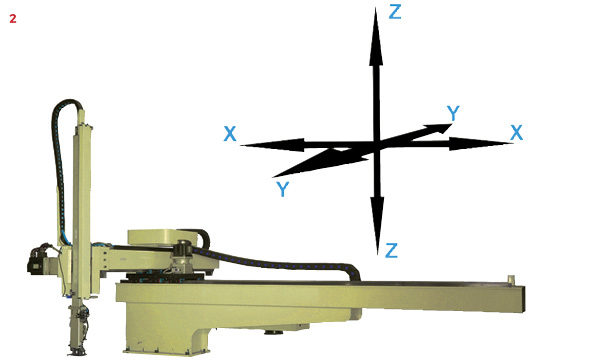
An alternative to this would be to use a 2-axis robotic solution to position accurately in the X and Y axis but to also utilize a vacuum cylinder, such as the one shown in Fig. 3. By using a vacuum cylinder, you can eliminate the Z-axis actuator altogether. This saves a lot of money in the automation equipment.
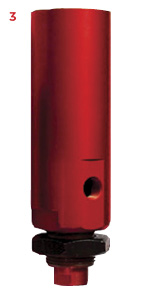 The vacuum cylinder utilizes a vacuum force from a vacuum pump or vacuum venturi (compressed air-powered vacuum “pump”). The cylinder’s rest position is shown in position (1) of Fig. 4. When vacuum is applied, the cylinder rod extends (2) until the vacuum cup seals on the load to be lifted. As soon as a vacuum seal is made, the cylinder automatically retracts and holds the product (3). When the vacuum is turned off, by means of a vacuum control valve for example, the product is released. The cycle is now complete.
The vacuum cylinder utilizes a vacuum force from a vacuum pump or vacuum venturi (compressed air-powered vacuum “pump”). The cylinder’s rest position is shown in position (1) of Fig. 4. When vacuum is applied, the cylinder rod extends (2) until the vacuum cup seals on the load to be lifted. As soon as a vacuum seal is made, the cylinder automatically retracts and holds the product (3). When the vacuum is turned off, by means of a vacuum control valve for example, the product is released. The cycle is now complete.
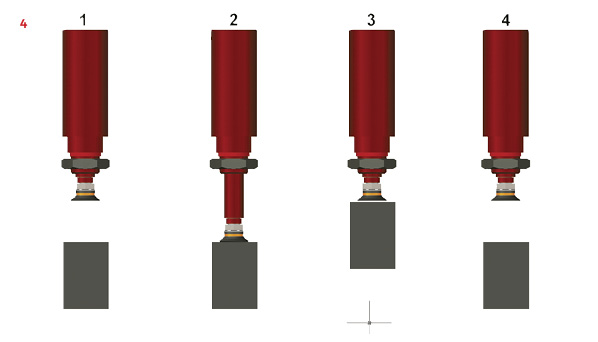
The single biggest advantage of the vacuum cylinder is that it doesn’t need any other motive power, such as a pneumatic, electric, or mechanical actuator, to extend and retract. It’s completely autonomous from the XY axis operators. A secondary advantage of the vacuum cylinder is that it incorporates automatic Z height adjustment. Wherever the product is positioned within the cylinder stroke is where the cylinder will stop and immediately retract. These cylinders are also available with a sensor (as shown in Fig. 5) to determine the internal piston position. This allows the machine controller to confirm where the cylinder is at any given point, which is important in automation equipment.
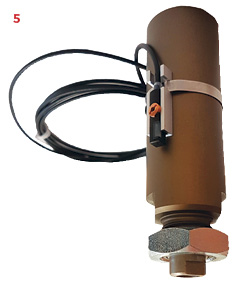 Three schematics are shown in Fig. 6: one using a vacuum pump, and the others both using a venturi–one with a vacuum control valve and the other with a close-coupled vacuum venturi utilizing a pneumatic control valve to turn vacuum on and off to the venturi.
Three schematics are shown in Fig. 6: one using a vacuum pump, and the others both using a venturi–one with a vacuum control valve and the other with a close-coupled vacuum venturi utilizing a pneumatic control valve to turn vacuum on and off to the venturi.
The choice of an electrical pump or air-powered venturi does not offer any advantages in respect to the cylinder operation, but having a vacuum control valve as close to the cylinder as possible allows a vacuum reserve between the pump/venturi and valve to accumulate between cycles, which offers instant vacuum force to the cylinder when the valve is actuated, which will result in a faster cylinder extend rate.
The vacuum cylinder offers the machine builder an effective, fast, and simple solution for Z-axis automation in vacuum pick-and-place. The advantage of simple control, automatic height compensation, and fewer working components make this Z-axis solution an option for all machine builders in the automation industry.
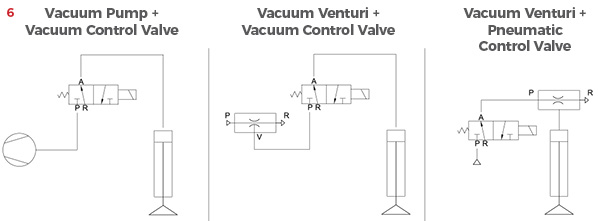
Demonstration and test videos can be found at the Vacuforce website: http://www.vacuforce.com/cylinders.
This article is intended as a general guide and as with any industrial application involving machinery choice, independent professional advice should be sought to ensure correct selection and installation.

